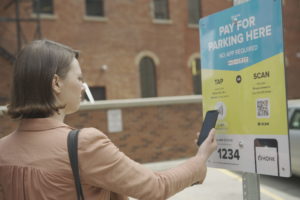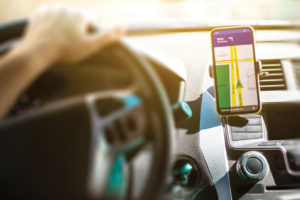Update on new accommodations for scholarship applicants
As communities and universities across Canada respond to the COVID-19 pandemic, Scholarship Partners Canada is committed to ensuring scholarship applicants have the support they need to weather the impacts of these unprecedented events.
Students face new logistical challenges as universities transition to online instruction, on-campus student services transition to alternative delivery forms, and increasing numbers of university staff and faculty members transition to work-from-home arrangements. In response to these challenges, Scholarship Partners Canada has relaxed application requirements, including by:
- Accepting unofficial transcripts, bearing the student’s name and date, from student accounts where official transcripts are not available; and
- Accepting reference letters with referee contact information and/or digital signatures in place of original signed letters.
These accommodations will help ease the scholarship application process at a time when students need our support more than ever. We will continue to monitor the situation and remain flexible as we support our clients and students through this rapidly evolving situation.
Link to Nouvelles dispositions pour accommoder les candidats aux bourses d’études
Honk is providing its contactless, cashless & app-less HonkTAP smart stations for free to owners and operators of parking lots across North America
This no cost initiative is meant to encourage drivers everywhere to safely pay for parking using contactless payments
Toronto, ON – March 12, 2020 – In response to the current Coronavirus outbreak, HonkMobile, North America’s leading provider of electronic payments for the parking industry, announced today it will be providing its HonkTAP pay stations to owners and operators of parking across North America at no cost in an effort to encourage drivers everywhere to pay for parking via contactless payments.
Society is being forced to adapt – and quickly – to help stop the spread of the virus. The World Health Organization recently issued a statement urging consumers to use contactless payments whenever possible in an effort to reduce the risk of the transmission of COVID-19 (coronavirus).
“This is one small way we’re trying to do our part,” said Michael Back, Honk CEO and President. “We have developed this technology and would like to share it with the world so that drivers can park smart, avoid cash and high-touch areas like parking kiosks, and pay in a safe and responsible way.”
With no app to download or account to set up, drivers simply tap or scan their phone on a HonkTAP smart station to pay. This contactless option gives drivers the fastest and safest checkout process available today. With no cash or public structure to touch, drivers simply tap their phone or scan the QR code near a HonkTAP station to pay for parking.
The implementation of HonkTAP smart stations is fast, simple and requires minimal effort for the parking operator. Honk will provide operators with an NFC-embedded smart station that can be used in any parking location. HonkTAP stations don’t…
Student Autonomous Snow Plow Competition – Call for Participation
Autonomous snow-plows are a next-generation engineering challenge that have tremendous economic and social potential. CAVCOE is organizing and hosting the second student competition in Canada. The aim of this competition is to provide an opportunity for students to apply their knowledge and skills from the classroom to a tangible real-world problem, and to develop technical and business skills required to excel in today’s high-tech world.
The competition is open to teams from Canadian secondary and post-secondary education institutions. Registered student teams are required to develop a scale-model of an autonomous or semi-autonomous snow-plow vehicle capable of completing a number of snow-plow style tasks.
Scenario
A major snowstorm has dumped a metre of snow on Ottawa Ontario just in time for the City’s annual Winter Expo. What to do? Fortunately, an R&D company you have co-founded is developing autonomous ground vehicles. Your company has developed an autonomous snow-plow and think this is a great opportunity to test the prototype. Your company offers to help the city with this emergency and the city has accepted, provided that your team-mates are available to operate it. Your company accepts the challenge.
Challenge
Teams must develop a snow-plow capable of completing a number of snow clearing tasks that may involve recognition of objects, detecting and avoiding hazardous conditions, path-finding and avoiding people and cars. Additionally, teams will be required to present a business case for their design. Teams will be scored on their design, their business pitch, and their snow-plow’s ability to complete one or more challenges.
Details
- To register or for additional enquiries please write to competition@cavcoe.com
- Full technical details are in the Concept of Operations (Conops) at http://caspi.cavcoe.com/2020_Student_Compeition_CONOPS_and_Rules_Rev1.pdf
Key dates:
- February 7, 2020: deadline for teams to indicate their intent to participate in the competition.
- February 28, 2020: registered…
Smart Cities are the way of the future. Every city in Canada is already planning its evolution into a Smart City and some are beginning to implement the initial elements.
The success of this evolution will depend largely on parking technology. Drivers—and eventually those in autonomous vehicles—need to park, and making it easier to park will dramatically reduce congestion on city streets. In the not-too-distant-future, when we leave the house, we’ll just enter our destination into our car’s GPS and then the car will guide us directly to the closest available parking space to that destination. If we haven’t already reserved and paid for a parking space in advance, we’ll be able to pay with our cell phones. If we need more time than we paid for, we’ll get a text reminding us when it’s time to move the car and asking if we want to pay for more parking—which we can do with our cell phones, without returning to the car.
The Foundation of Smart Cities
Intelligent parking technology will play the key role. Intelligent parking uses parking guidance sensors located in or over parking spaces to monitor whether they are occupied or available, and transmits that information to strategically located signs to guide vehicles directly to available spaces.
Parking guidance is already common in parkades throughout Canada. While it’s primarily used as a driver amenity designed to make it easier to quickly and conveniently find an available parking space, it also helps parking organizations better manage their assets by providing real-time data about how those assets are being utilized. Additionally, parking guidance also helps organizations increase their occupancy by eliminating the risk that drivers will give up looking for a space and…
When the time comes to consider asphalt repair for your parking lot or driveway, you want to be absolutely sure you’re choosing the right option. Asphalt paving and sealcoating can appear similar on the surface—no pun intended—but these two maintenance and repair procedures are very different.
Asphalt Paving – The what, how, and when
Asphalt paving is the process where existing asphalt surfaces are either replaced or have a new layer of asphalt added on top of them. It’s most often used when asphalt is showing signs of deterioration or wear, such as large cracks and potholes, but when the wear is not bad enough to warrant a complete replacement.
There are a number of options for surface asphalt repair, depending on the issues your parking lot is facing:
Infrared repair – a process in which new and existing asphalt is blended together and compacted into the damaged area for seamless reparation of potholes and rough areas. This method is particularly effective due to the quality of the repair, reduced construction time, and economical advantages.
Pothole repair – asphalt mix is added to the hole after debris has been cleared away, which is then compacted with a multi-ton vibratory roller or a vibratory plate. This is, more often than not, a remedial repair and the hole may reform months or even weeks after the job.
Resurfacing – after the asphalt has been cleared of debris, a new layer of asphalt is applied to the old surface. Between these layers is tack coat, which bonds the two different asphalts together firmly. The new layer will measure the correct depth and be compacted with a multi-ton vibratory roller.






